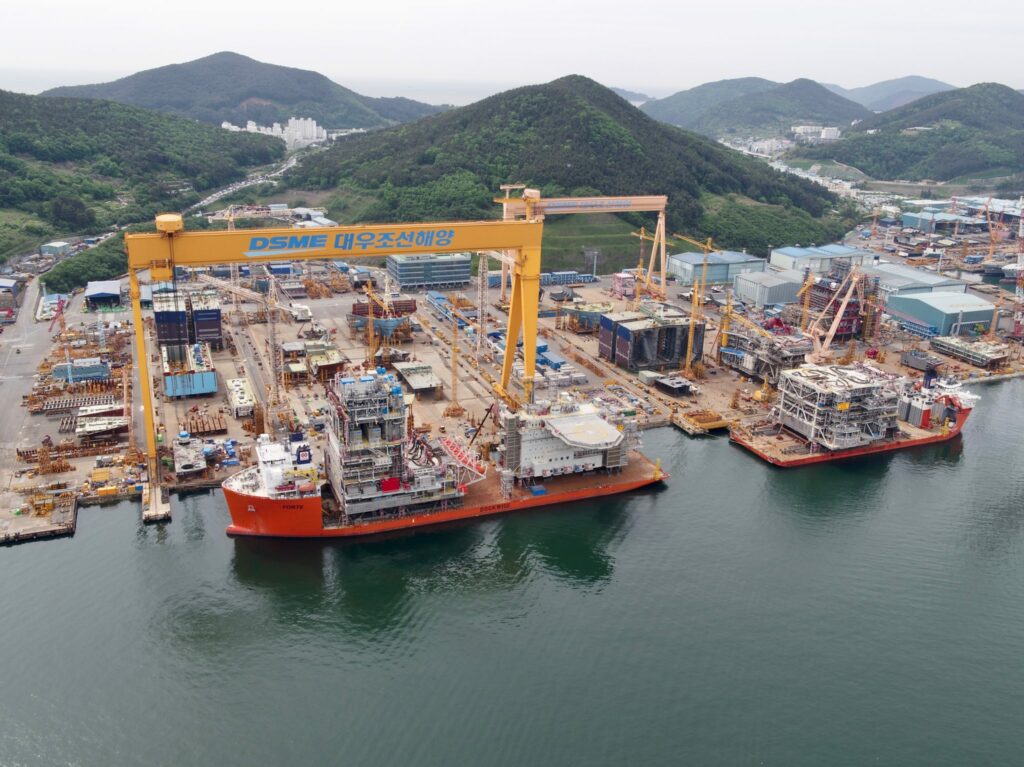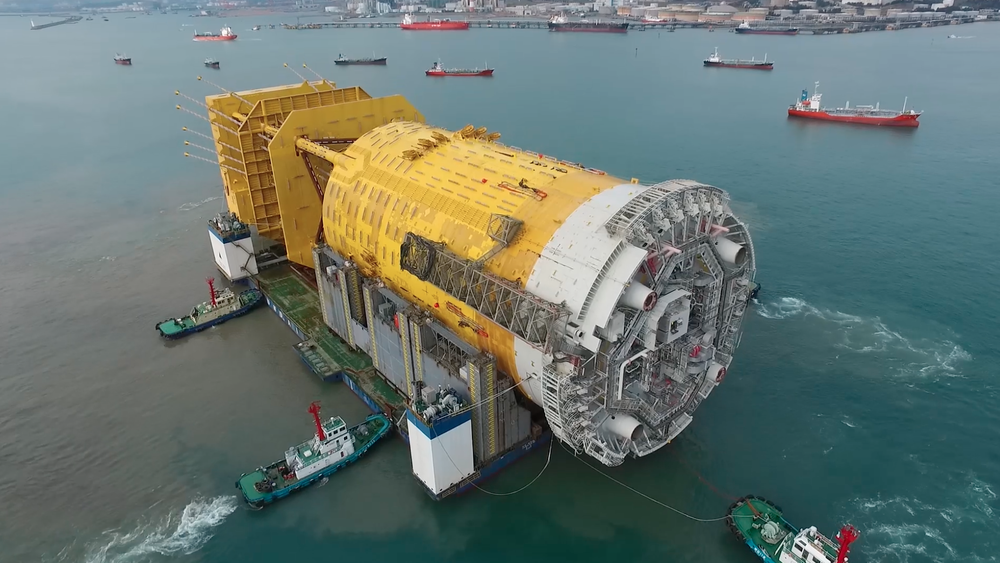South Korea – a key fabricator

This east Asian nation has been transformed over a couple of generations from a poor agricultural nation to one of the region’s wealthiest countries. After the Korean War of 1950-53, it has experienced massive economic growth through a combination of state control and market economics plus the conversion of imported raw materials into export products.[REMOVE]Fotnote: https://www.fn.no/Land/soer-korea.
Many orders
South Korea have been among the world’s biggest shipbuilders for several decades, and is also known for manufacturing several makes of car as well as electronics. The country’s yards have also proved highly competitive in building offshore installations, resulting in several contracts from Statoil for platforms and vessel.
As one order followed another for units to conduct petroleum exploration, production and transport, it became relevant for the company to open a local office to support its construction supervision teams. The three yards doing work for Statoil have been Daewoo Shipbuilding & Marine Engineering (DSME), Hyundai Heavy Industries (HHI) and Samsung Heavy Industries (SHI). Both HHI and SHI are ”chaebol” – large family-owned conglomerates.
DSME has built facilities for both the UK and Norwegian continental shelves (UKCS/NCS), including most of the modules for Britain’s heavy crude Mariner field operated by Statoil/Equinor. Other assignments include a storage ship for Heidrun completed in March 2015, hulls for the semi-submersible Gjøa, Kristin and Åsgard B platforms and modules for the Gina Krog facility.

HHI has not done that much work for Statoil, but built the topsides and support structure for Aasta Hansteen in 2018.
For its part, SHI built the Mariner topsides, two drilling rigs for Oseberg and Gullfaks, and the topsides for the Valemon platform delivered in 2014. This yard was also contracted to build a platform for the Martin Linge field as well as a riser platform and a process installation for Johan Sverdrup. The last of these were largely outfitted in South Korea and thoroughly tested before the platform was transported to the NCS.[REMOVE]Fotnote: https://www.equinor.com/where-we-are/south-korea, accessed 7 December 2021

Great activity and several accidents
All these fabrication contracts ended up in South Kora during the busy boom years before the oil crisis of 2014-15. The yards then had full order books, and it was important not to lose one’s place in the queue.
The high level of activity appears to have increased risk for workers at the yards. Norwegian media highlighted three work accidents on Statoil projects at South Korean yards during a six-month period in 2016.[REMOVE]Fotnote: https://e24.no/olje-og-energi/i/On5XRb/fellesforbundet-om-verftsulykkene-i-soer-korea-minst-ti-doede-paa-jobb-for-det-norske-oljeeventyret.
One of these was a fatal fall on the Aasta Hansteen platform at HHI. The victim was not a Statoil employee. The accident occurred even though the company had 90 people supervising fabrication jobs in South Korea. Local health, safety and environmental (HSE) inspectors familiar with the local culture, language and conditions had been employed, but that was not enough to prevent the incident.[REMOVE]Fotnote: https://e24.no/naeringsliv/i/WbKxpL/mann-doede-etter-ulykke-paa-statoil-rigg-i-soer-korea, accessed 7 December 2021.
HHI had a sky-high accident frequency that spring, with five workers killed on non-Statoil jobs in March and April alone. The Korean government reacted by closing the yard for a time.[REMOVE]Fotnote: https://www.tu.no/artikler/dodsfallene-fortsetter-samme-uke-som-solberg-besokte-verftet-omkom-ytterligere-tre-arbeidere/346603.
One person working on the Cat-J project at SHI died on 5 May 2016 after an accident on 21 April. The yard was then constructing two jack-up rigs owned by the Gullfaks and Oseberg licences.[REMOVE]Fotnote: https://e24.no/olje-og-energi/i/On5XRb/fellesforbundet-om-verftsulykkene-i-soer-korea-minst-ti-doede-paa-jobb-for-det-norske-oljeeventyret.
The worst accident occurred on 1 May 2017, again at SHI. Six workers died and 22 were injured when two cranes collided and one weighing 32 tonnes overturned while the Martin Linge platform was under construction. This resulted in the yard shutting down and caused delays to the other fabrication projects – including for Johan Sverdrup.[REMOVE]Fotnote: DN, 5 May 2017, “Statoil-plattformer på hold etter ulykke i Sør-Korea”. The Martin Linge facility was subsequently towed from SHI for completion in Norway.[REMOVE]Fotnote: https://e24.no/olje-og-energi/i/50q7lz/9-regelbrudd-avdekket-paa-ulykkesplattformen-martin-linge.

After the incident, Statoil/Equinor, Total, oil service company TechnipFMC and SHI were charged with breaching the OECD’s guidelines for responsible business by the OECD Contact Point, an organisation in Norway. These accusations alleged that obligations to conduct continuous risk assessments during fabrication were not observed. The organisation behind these claims has no judicial authority and can only present non-binding assessments of complaints made. The legal process following this tragic accident was conducted in South Korea.[REMOVE]Fotnote: https://frifagbevegelse.no/forside/equinor-er-klaget-inn-for-brudd-pa-oecdregler-etter-kranulykke-i-sorkorea-6.158.620854.6483c465d9
From fabrication to wind
After completion of the Johan Sverdrup project, Equinor has no further oil-related contracts in South Korea. Attention since 2019 has primarily concentrated on opportunities for participating in floating wind power projects off Korea.
arrow_backGas from high-risk AlgeriaExploration licence in Myanmararrow_forward